Imagine the White House today with a sunken living room, Danish modern furniture and plywood paneling. The historic old building might have been redesigned in Mid-Century Modern had it not been for the preservation efforts of two architects born and trained in New England.
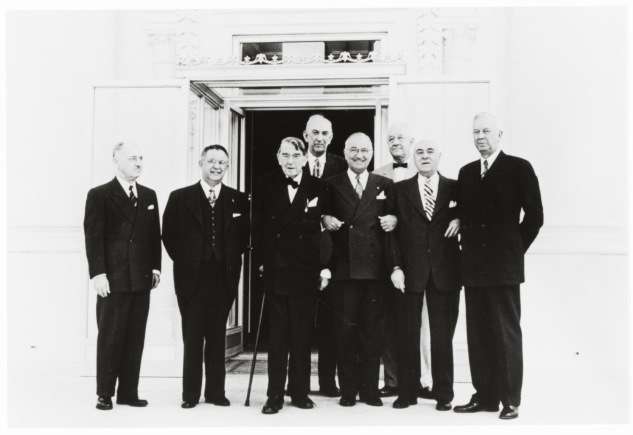
President Truman with the Commission on the Renovation of the Executive Mansion. Left to right: Major General Glen E. Edgerton, Representative McGregor, Senator Kenneth McKellar, Richard E. Dougherty, the president, Mr. Douglas W. Orr, Representative Louis C. Rabaut, Senator Edward Martin. Courtesy National Park Service.
Few people realize the White House had fallen into serious disrepair by 1948. President Harry Truman moved out for three years while workers gutted the building to its exterior walls. They quietly buried most of the original paneling and fixtures in a Virginia landfill.
The public was led to believe the Executive Mansion had been restored. Even Hillary Clinton thought she’d walked down hallways Lincoln had walked. She hadn’t.
It could have been worse. The building might have been razed, if some members of Congress had their way. They wanted to build a modern new house for the President. (And remember, this was the 1950s.)
“People don’t realize how close they came to losing the White House,” said Robert Klara, author of The Hidden White House: Harry Truman and the Reconstruction of America’s Most Famous Residence.
Klara credits Lorenzo Winslow and Douglas Orr with preserving the historic character of the mansion – to the extent it was preserved.
Harry Truman
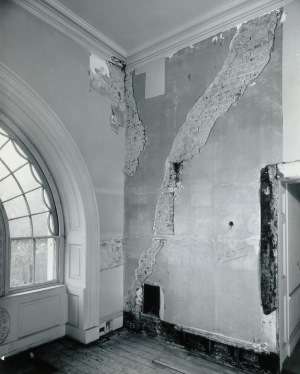
Cracks discovered in the north brick wall of the West Sitting Hall revealed during the engineering inspection in 1948. Courtesy National Park Service.
Most people know how Jackie Kennedy restored the White House, but few know she was simply finishing the job Harry Truman started.
Franklin Roosevelt had neglected the upkeep of the White House during the Depression and World War II. The Army Corps of Engineers cautioned him about failing wooden supports, crumbling masonry and major fire hazards. Roosevelt ignored the warning.
After Roosevelt died in 1945, Harry Truman, his wife Bess and daughter Margaret toured the White House before moving in. They were shocked by the cracked, dingy walls and the furniture that belonged in a third-rate boardinghouse. “The White House upstairs is a mess,” wrote Margaret in her diary after their visit. “I was so depressed when I saw it.”
Shortly after the Trumans moved in they began to notice the White House ghosts. The floors heaved like the deck of a schooner. Half-ton chandeliers swayed, stretched and danced above the heads of guests oblivious to the danger. Draperies moved and groans emanated from the old walls.
Harry Truman eventually realized it was the sound of the mansion slowly collapsing.
In 1948 Truman was taking a bath on the second floor when his valet walked in and the floor buckled. Truman envisioned the tub falling onto the DAR tea party below, ‘wearing nothing more than his reading glasses.’
Then one day in June daughter Margaret was playing the piano in her sitting room when a piano leg plunged through the floor and through the ceiling of the family dining room below.
Abusing the White House
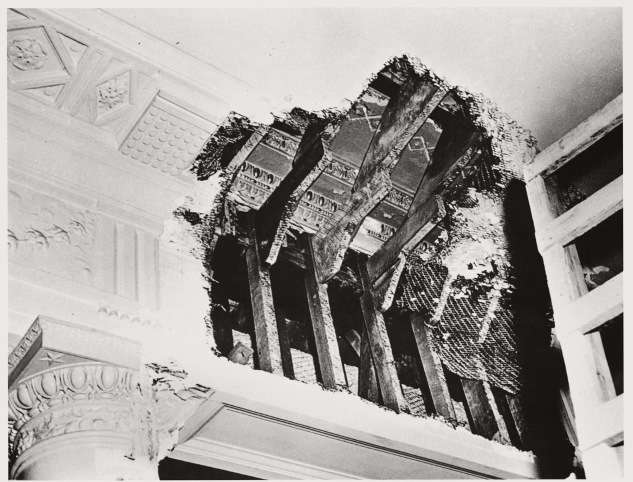
Demolition work in 1950 exposed architect James Hoban’s original plaster cornice beneath the cornice from the 1902 Theodore Roosevelt renovation by McKim, Mead and White. Courtesy National Park Service.
Franklin Roosevelt wasn’t the only president responsible for the disrepair of the White House.
The original architect hadn’t built foundations for the heavy interior walls, which sat on soft clay and gravel. The British burned the building in 1814, and scorched wooden beams were reused in its remodeling. Successive presidents had structural supports cut through to add indoor plumbing, gas lighting, electric wiring and heating ducts. Old water pipes, gas pipes and heating ducts were left in place, adding weight to the building.
In 1902, Teddy Roosevelt’s renovation and expansion of the White House took out a load-bearing wall. And in 1927, Calvin Coolidge added a concrete-and-steel third floor under a rebuilt roof, transferring weight to the unsupported interior walls.
Part of the problem was that work had to be done quickly because presidents were only guaranteed to live in the White House for four years.
By 1948, some said the White House was standing only from the force of habit.
By the time Margaret Truman’s piano leg fell through the floor, her father had quietly asked engineers and architects to investigate the White House’s condition. Truman didn’t want to publicize the sorry state of the building. Despite his dismal approval ratings, he was running for re-election. He knew the image of a collapsing White House was an apt metaphor for his plummeting popularity.
Parking Garage
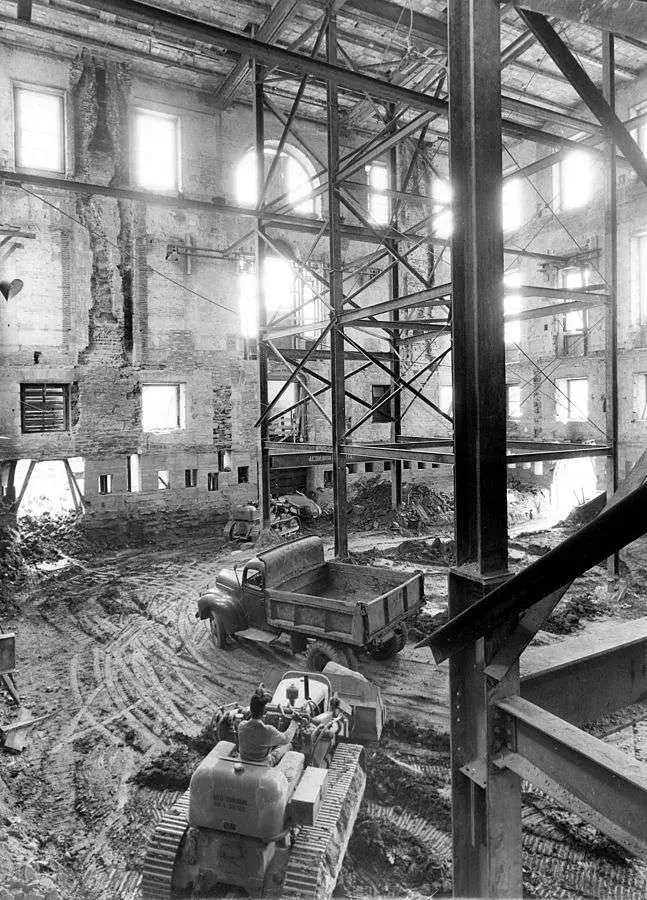
Inside the White House during renovation. Truman wrote it was just a shell. Courtesy National Park Service.
Harry Truman shocked pollsters by winning the 1948 presidential elections. After a summer of campaigning, the Trumans were ready to move back into the Executive Mansion. By then, investigators believed the White House was in imminent danger of collapse. They said it was too dangerous for the First Family to live in.
For the next three years, the Trumans lived in the Blair House across from the White House. It was dangerous there, too, because the house was so close to the sidewalk.
Demolition of the White House interior began without fanfare in December 1949. Fences were built around the building so the public couldn’t know what was going on inside them.
“It’s surprising that people have no idea what happened to it,” Klara said.
(End of Part I of this story. Click here for Part II. This story last updated in 2023.)
* * *
Now available in paperback. Click here to order now from Amazon.
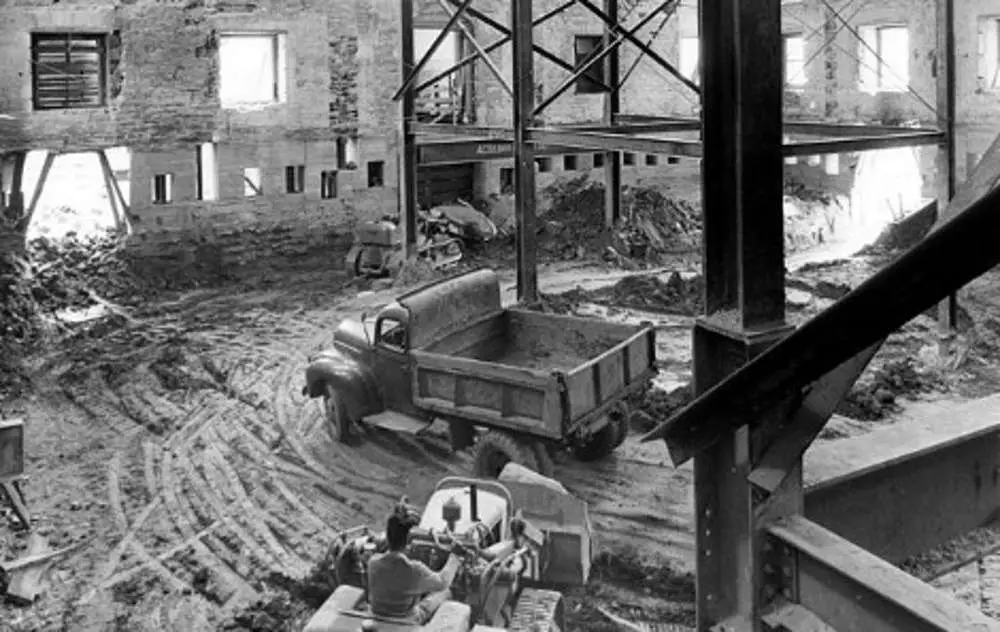
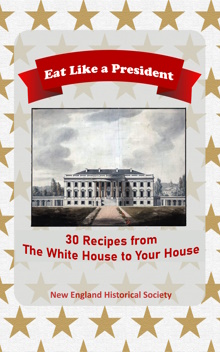
11 comments
[…] The soldiers sang patriotic songs as they headed toward the reviewing stand in front of the White House. Children handed the soldiers bouquets. The next day, Gen. William Tecumseh Sherman led the 65,000 […]
[…] Toy Len Goon was born Sept. 21, 1891 in a mud brick hut to peasant farmers in Guangdong Province. It was a far cry from the White House, where she would meet First Lady Bess Truman. […]
[…] or wouldn’t – fulfill a social commitment. Once Jackie begged off a ‘meet-and-greet’ with White House visitors, and Ethel hosted the event instead. Jackie went off to play tennis. Her press secretary […]
[…] and Mary Hellen Adams moved into the White House. They had two daughters, Mary Louisa and Georgeanna Frances, after her two uncles. Grandpa Adams, […]
[…] for example, Coolidge would press all the buttons on his desk, causing bells to ring all over the White House and all the servants to come running — for the fun of […]
[…] Saturday June 14, 1952, President Harry Truman visited the shipyard at Groton, Conn., to celebrate laying the keel for the USS Nautilus, the first […]
[…] hung May baskets as well. In 1927, Washington, D.C., schoolchildren hung a May basket on the White House door for First Lady Grace […]
[…] wouldn’t be the first person with African blood to inhabit the White House. The van Salee descendants also included President Warren G. Harding, as well as the Vanderbilts, […]
[…] an eye for young talent. He chose interior designer Sister Parish, who would later work on the White House, to create the interior decorations of his restaurants in the 1930s. Christian Dior would later […]
[…] In honor of the holiday, the First Lady wore a red dress and walked Charles Collingwood through the Executive Mansion. […]
[…] the White House pressed the Board for a recommendation on what action, if any, it should take against […]
Comments are closed.